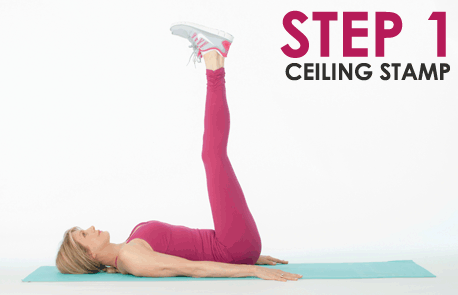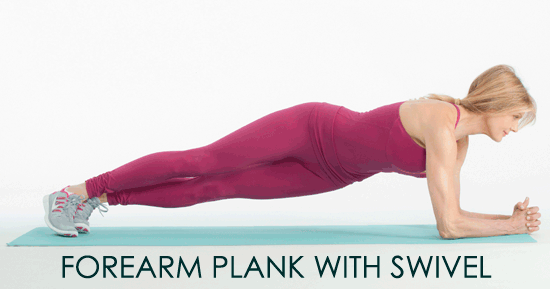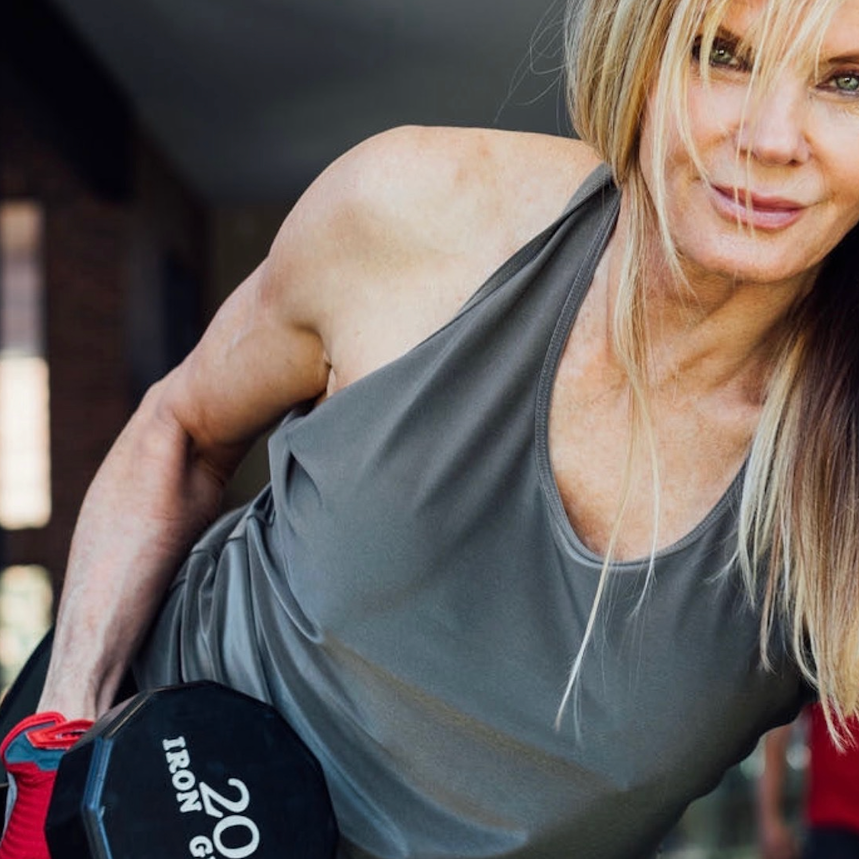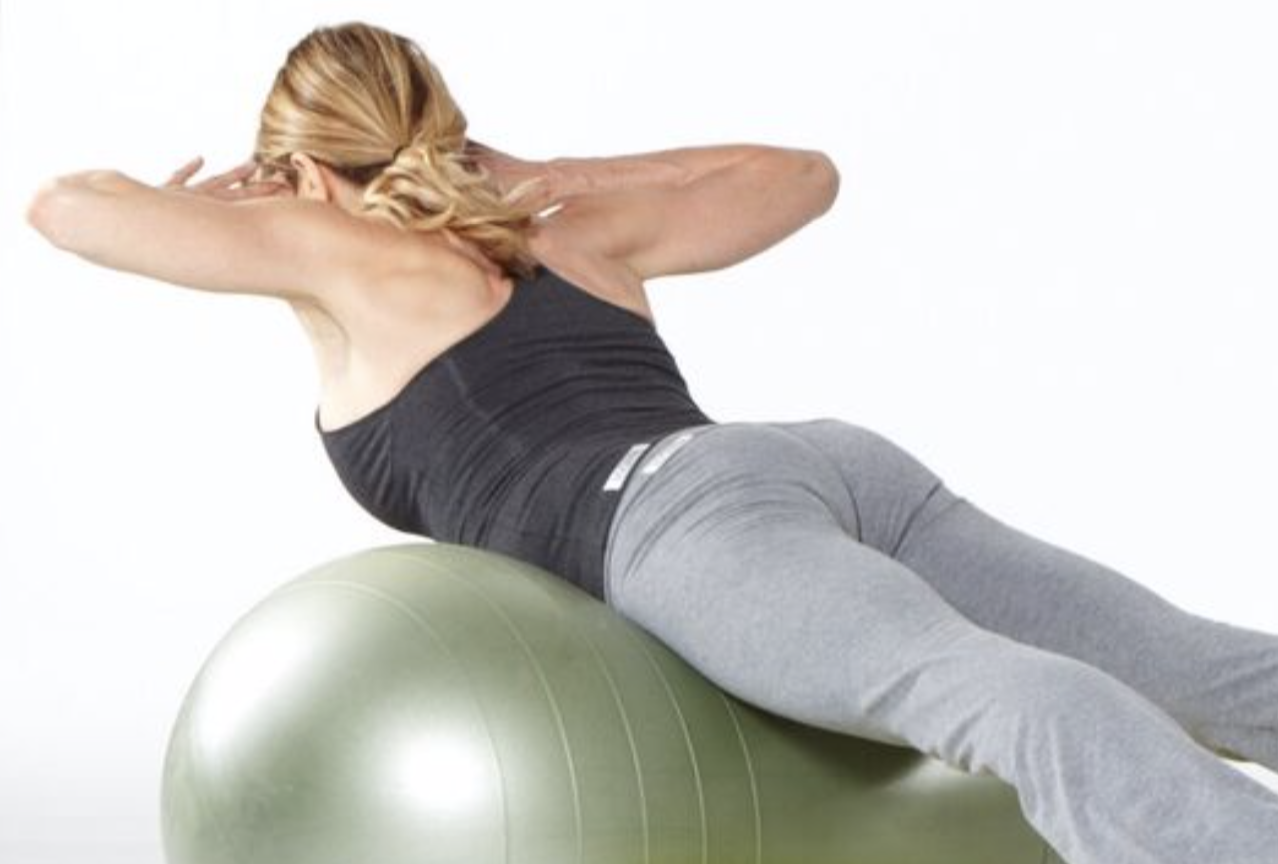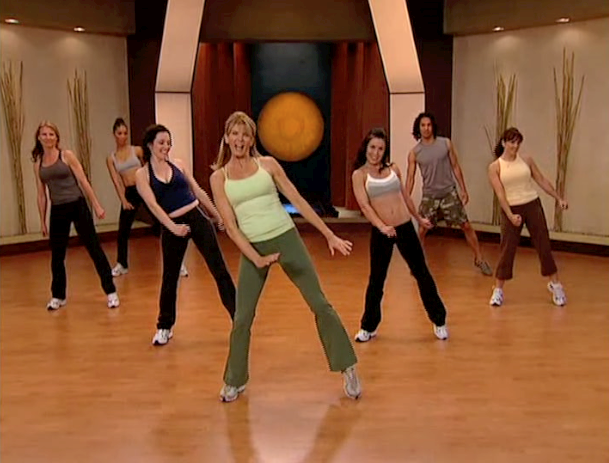
We’ve all done it: That moment when you stand in front of the mirror and “pinch an inch,” squeezing the extra flesh around your midsection, imagining what you’d look like if you could just wave a magic wand and make it disappear. It’s in our nature to seek out a svelter stomach, to try for a tighter tummy, to wish for a whittled waistline. And here’s the good news: It’s totally doable with this cheat-sheet for flat abs…
STEP 1. Cut Your Cortisol
 Cortisol is a hormone that’s triggered when we experience stress. So anytime we’re in a situation that activates our stress response, cortisol floods our bloodstream. And it’s bad news for several reasons. It’s a domino effect: High stress equals high cortisol levels, and high cortisol levels can lead to a whole host of issues, including depression, anxiety, and weight gain.
Cortisol is a hormone that’s triggered when we experience stress. So anytime we’re in a situation that activates our stress response, cortisol floods our bloodstream. And it’s bad news for several reasons. It’s a domino effect: High stress equals high cortisol levels, and high cortisol levels can lead to a whole host of issues, including depression, anxiety, and weight gain.
When cortisol kicks in, it shuts down our fat-burning systems, and actually tells the body to start storing fat, specifically in the midsection. That’s why there’s such a strong connection between high levels of stress and high levels of belly fat – it all comes down to cortisol.
When you trigger your body to constantly pump out cortisol, it starts to run dry of the ingredients it needs to make it. When this happens, your adrenals use other hormones (such as testosterone, estrogen and progesterone) to make the cortisol. This can lead to a condition called “adrenal fatigue,” causing constant fatigue during the day, and high cortisol levels at night.
It’s a viscous cycle. The less sleep we get, the higher our cortisol levels – so that lack of sleep doesn’t just cause crankiness and brain fog – it can also lead to belly fat. In fact, studies show that going on a nature walk with friends will not only help balance out your cortisol levels, but will also help you gain perspective and serve as a reminder that you can handle anything.
STEP 2. Stamp The Ceiling!
The “stamping” action of this Ceiling Stamp exercise requires full abdominal contraction for slow, controlled movement, with an emphasis on the lower part of the rectus. Here’s how to do it:
- Lying on your back, squeeze your abdominals and lift your legs off the floor. Extend them up straight, feet facing the ceiling.
- With your hands on the floor for balance, use your lower abdominal strength to push your feet up 1-2 inches toward the ceiling (meaning your hips come 1-2 inches further away from the floor simultaneously). It’s a quick movement, almost a ˙pulse,” as if you’re stamping the ceiling with the bottom of your feet (hence the title).
Beginners:
- Press your palms into the floor to support you. If it’s too challenging to keep both legs off the floor, you can also try doing it one leg at a time.
Advanced:
- Slowing down the movement actually provides an additional challenge. Make both the up and down portions of the movement slow and controlled.
Forearm Plank With Swivel
This move is a plank with a twist, a core stabilizing exercise that recruits your obliques for rotation.
- Start in a plank position, resting on your elbows. Keep the shoulders back and down, and the next nice and long throughout the movement. Beginners may rest on the knees instead of a full plank.
- Keeping your abs engaged, slowly swivel the hips underneath you to the right. Feel your obliques driving this motion as you swivel to the other side with a slow, controlled motion.
STEP 3. Drink Up!
 Water plays a key role in weight loss and overall health, and most of us tend to be dehydrated. From lubricating joints to giving your muscles their shape and form, water serves a multitude of bodily functions.
Water plays a key role in weight loss and overall health, and most of us tend to be dehydrated. From lubricating joints to giving your muscles their shape and form, water serves a multitude of bodily functions.
By making one small change and substituting water for fruit juice and soda, and alcohol, you can help trim away your belly!
Water comprises about 70% of our blood, and acts as the vehicle that transports fat out of the body.
Eight to ten glasses a day will help you keep belly fat at bay. Being properly hydrated will improve your digestion and help improve both your stamina and recovery process when it comes to workouts. And it’s key for beating the bloat: It may seem counter-intuitive, but drinking plenty of water actually helps you lose water weight, by helping your cells to release extra sodium and flush it out of your system.
If you’d like to “jazz up” your daily water intake, try infusing it with some fruit, cucumbers, or my new favorite…Unsweetened Bhakti Chai! With a combination of spices including ginger and cardamom and a little caffeine, water just got a whole lot tastier! This can lend some flavor to a pitcher of water without adding sugar and calories. Herbal tea is another great option.
STEP 4. Switch Up Your Seasonings
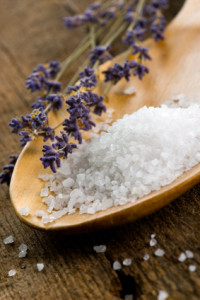 Salt is necessary for healthy functioning. Replacing your salts is important when you are exercising heavily and perspiring, which causes you to lose salt and potassium. However, if you’re over-doing processed foods and getting too heavy-handed with the salt shaker, it can cause water retention, adding to your belly bloat.
Salt is necessary for healthy functioning. Replacing your salts is important when you are exercising heavily and perspiring, which causes you to lose salt and potassium. However, if you’re over-doing processed foods and getting too heavy-handed with the salt shaker, it can cause water retention, adding to your belly bloat.
In my kitchen I prefer Himalayan Pink Salt, because it doesn’t have other additives like aluminum or iodine.
When you read labels, the easiest trick for gauging whether or not a food is considered high in salt is to compare the calorie count to the sodium content. If there are more grams of sodium in a serving than there are calories, it definitely falls into the high-sodium category, and should be avoided. This rule only applies, of course, to packaged and canned foods – and the more you stick to the perimeter of the supermarket, stocking up on fresh veggies, fruits, lean cuts of protein and healthy unsaturated fats, the less likely you are to find hidden salt in your food.
Three of my favorite salt-free seasonings:
- Turmeric: In the spice game, turmeric is a true all-star. This powerful anti-inflammatory is usually associated with spicy Indian dishes – but there’s so much more to it than that. The key ingredient in turmeric is curcumin, which may just work wonders for the body. Studies suggest that curcumin can help balance blood sugar by improving insulin production and aiding in proper carbohydrate absorption, it helps clear the plaque in the brain associated with Alzheimer’s, and even speeds up metabolism.
- Sage: There’s a reason this one is so often associated with wisdom: Including it in your diet is certainly a smart idea! Sage is actually a flavonoid, helping to prevent cell damage and acting as another great antioxidant and anti-inflammatory. And its phytonutrients have powerful memory-boosting qualities that may actually help improve cognitive function.
- Cayenne: This fiery form of the chili pepper cranks up more than the heat factor of your food. Cayenne can boost metabolism and even serve as a minor appetite suppressant, helping you to curb those unhealthy cravings. Also an anti-inflammatory, it’s an excellent source of beta-carotene, an antioxidant that battles everything from asthma to heart disease to arthritis.

